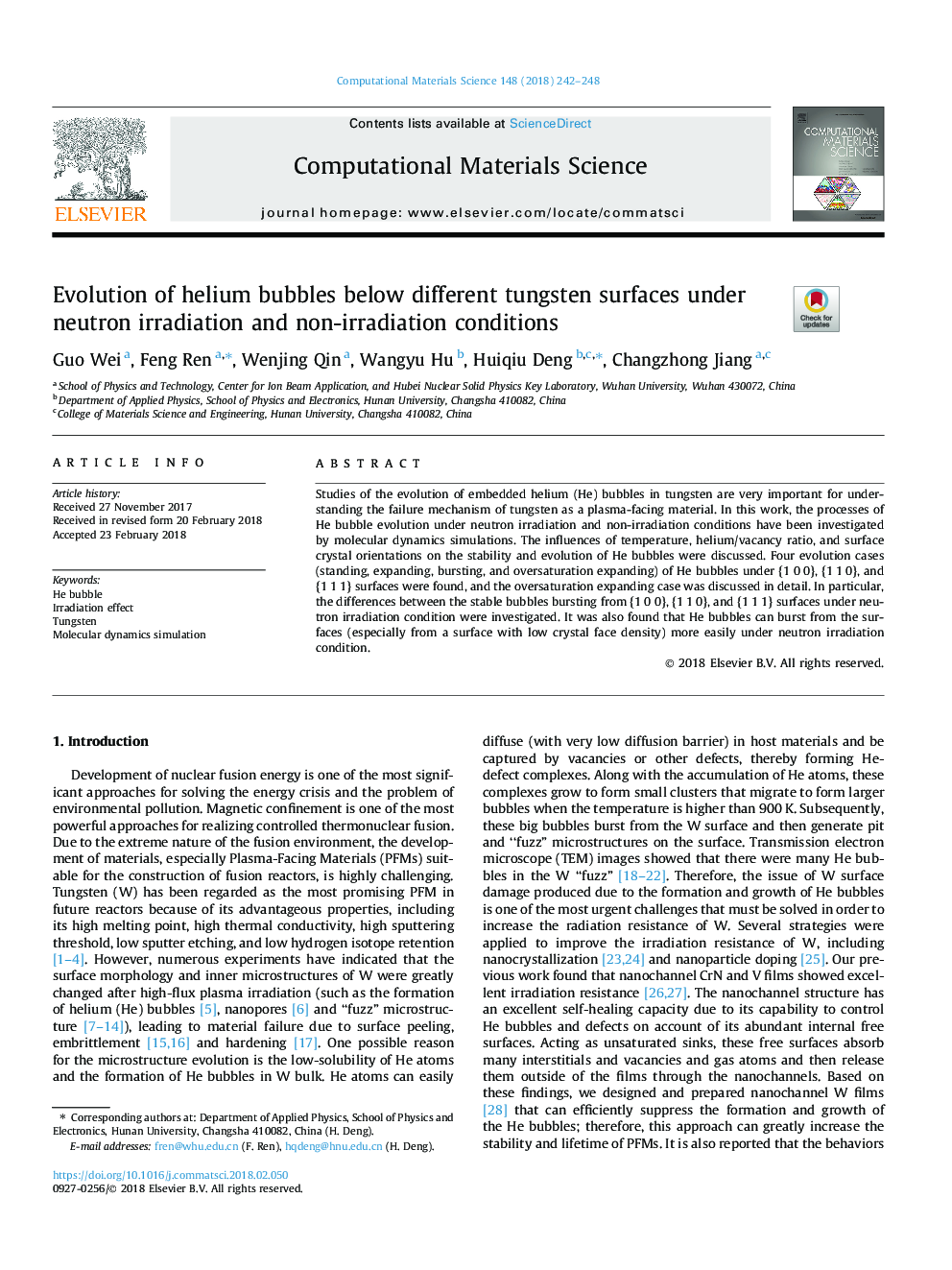| Article ID | Journal | Published Year | Pages | File Type |
|---|---|---|---|---|
| 7957666 | Computational Materials Science | 2018 | 7 Pages |
Abstract
Studies of the evolution of embedded helium (He) bubbles in tungsten are very important for understanding the failure mechanism of tungsten as a plasma-facing material. In this work, the processes of He bubble evolution under neutron irradiation and non-irradiation conditions have been investigated by molecular dynamics simulations. The influences of temperature, helium/vacancy ratio, and surface crystal orientations on the stability and evolution of He bubbles were discussed. Four evolution cases (standing, expanding, bursting, and oversaturation expanding) of He bubbles under {1â¯0â¯0}, {1â¯1â¯0}, and {1â¯1â¯1} surfaces were found, and the oversaturation expanding case was discussed in detail. In particular, the differences between the stable bubbles bursting from {1â¯0â¯0}, {1â¯1â¯0}, and {1â¯1â¯1} surfaces under neutron irradiation condition were investigated. It was also found that He bubbles can burst from the surfaces (especially from a surface with low crystal face density) more easily under neutron irradiation condition.
Related Topics
Physical Sciences and Engineering
Engineering
Computational Mechanics
Authors
Guo Wei, Feng Ren, Wenjing Qin, Wangyu Hu, Huiqiu Deng, Changzhong Jiang,
